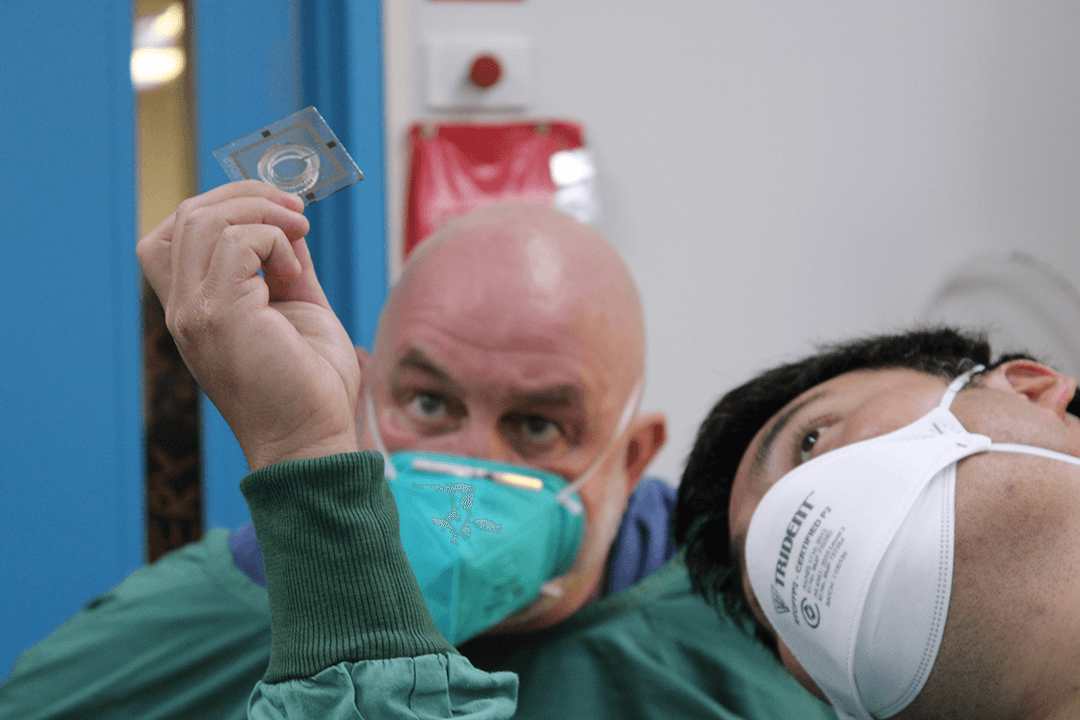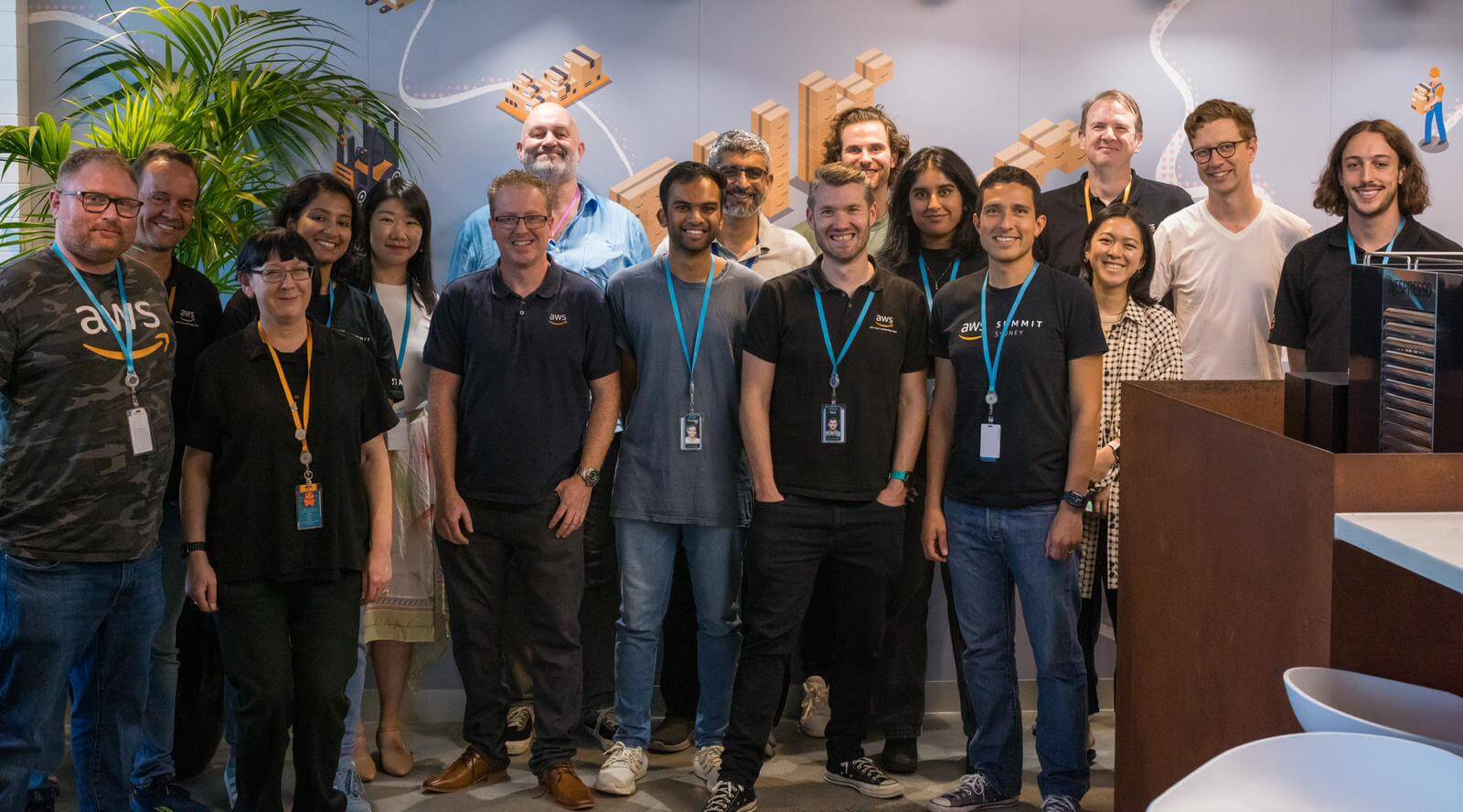
On my recent trip to Australia, I met with a handful of startups that are solving hard problems in healthcare, like mapping the brain, predicting seizures, and improving rehabilitation for elderly patients. And in all of these cases, cloud technologies are helping to accelerate research and innovation.
After half a dozen trips spread across two decades, vast is the first word that comes to mind when I think of Australia. From the Great Barrier Reef to the Blue Mountains, all the way to Kakadu National Park, it’s an immensely biodiverse place. Home to more than 1 million plant and animal species, many unique. However, it’s a country that is defined as much by distance and the spaces between, as it is by natural beauty. At nearly the size of the continental United States, Australia has less than 1/10th the population — but the population it does have is one of the most diverse in the world, including a rich blend of indigenous and immigrant cultures. It’s a country of wonderful contrasts. And for that reason, it should come as no surprise that the businesses and ideas born in Australia are as diverse as the people that inhabit it.
For a few weeks in January and February, I had a chance to visit the east coast of Australia, which coincided with our first AWS Region launch of the New Year. After a quick visit to Rod Laver Arena, where I witnessed an incredible showing from Novak Djokovic against Stefanos Tsitsipas, I spent most of my time meeting with AWS customers and Amazonians that are inventing Australia into the future. From centuries-old banks and large telco enterprises, to young startups doing everything from smart farming to piloting subterranean robots that map water systems beneath the city streets of Melbourne, the cloud is helping companies of all sizes innovate quickly and at scale.
It all starts with the brain
Australia is home to a flourishing startup scene. It’s flush with companies focused on improving healthcare outcomes, not only for people in Australia, but everywhere in the world. And it all starts with the brain.
Earlier this year, when we launched the AWS Asia Pacific (Melbourne) Region, I wrote about Omniscient Neurotechnology (o8t). A company that has built brain mapping software with the potential to revolutionize not only neurosurgery, but the way that we diagnose and treat both neurological and mental health conditions. When I got to Sydney, they were kind enough to sit and chat about their technology stack, and how cloud services, specifically machine learning, allow them to produce personalized brain maps from existing MRIs that not only show how a patient’s brain is shaped, but how each and every connection is clustered. And while I declined a personal brain scan (I’m not quite ready to know everything that’s going on inside my head), I left our conversation feeling hopeful. I remember the days when MRIs were filed in cabinets, and analyzing hundreds of thousands of data points was a pipe dream. This technology truly has the potential to improve our collective understanding of the brain, accelerate research, and most importantly, improve the lives of patients. I first learned of Omniscient from Billion Dollar Napkin, and I’m including a link to the episode because it’s absolutely worth watching.
It’s exciting to see how new technologies are being used to augment the expertise of doctors, researchers, and medical professionals. We can all agree that more precision in neurosurgery is a good thing. However, an area that is often overlooked, but equally important, is developing the tools that provide patients with more control of their treatments.
Seer Medical is a startup focused on improving the lives of people living with epilepsy. They have created a non-invasive wearable device that can be used at home to continuously collect EEG and ECG data from a patient. The data is stored in the cloud (hundreds of TBs), then analyzed to detect heart and brainwave abnormalities, which are used to predict seizures before they occur. Access to this type of information was historically limited to multi-day studies that relied on expensive equipment and required patients to stay at a clinic overnight for observation. When the study concluded, so did data collection. What Seer has developed is a game changer for patients, as well as doctors and researchers. It gives patients autonomy. If they know that some days are higher risk than others they can plan for it and minimize risks. For doctors and researchers it means more and better data to study, which may one day help them prevent epileptic seizures altogether.
In both cases, cloud technologies paired with human intelligence are moving us closer to a future where personalized healthcare is the standard, not the exception.
Biological intelligence
Not everyone studying the brain is focused on healthcare. Melbourne’s Cortical Labs are developing what they call “DishBrain Intelligence”. At the intersection of soft tissue and silicon, they are using stem cells to create the equivalent of a neural network that lives on a lab slide (the “DishBrain”).

So far, they have taught stem cells to play Pong. Like the neural networks used in machine learning, these biologic computers rely on reinforcement learning. When an action is performed, the network is either rewarded or penalized based on the result.
At a high-level, here’s how it works. The slide uses electrical inputs to see the paddle and ball, and electrical outputs to move the paddle. When the ball makes contact with the paddle, the network is rewarded with a small amount of focused energy. When the paddle misses the ball, the network is given a small amount of random noise. Over time, the stem cells learn to optimize the network to hit the ball. The irony is not lost on me that we have spent decades designing systems that mimic the human brain, and now we are seeing neural stem cells used in organic computers. Joking aside, the research being done by Cortical Labs is intriguing, and shows that there is still a lot that we have to learn. In the near future, they will be looking into the impacts of medicine and alcohol on their biological computers — it will be interesting to see what they discover.
Healthy body, healthy mind… and a bit of competitive advantage
Moving from the lab to the realm of everyday activities, there are Australian startups doing interesting work at the crossroads of health and sport. Companies like VueMotion, who are using computer vision to develop machine learning models that can track kinetic and kinematic data for athletes — everything from joint angles and gait analysis, to the impact force of a foot strike or a hard cut on the football pitch.
Similar to how Omniscient are building personalized brain maps, VueMotion are creating personalized body models. They showed me a demo of a runner whose stride lengths varied from left to right foot with an overlay of kinematic data. With this type of information, trainers and coaches can quickly gain an understanding of how someone moves in a natural environment, make adjustments, then track how their movements change over time — both progressions and regressions — all using video captured from a smartphone.
What VueMotion has built has real potential to prevent injuries and improve performance for athletes at all levels. It’s the type of innovation I alluded to in this year’s predictions. But the implications are much bigger than sport. VueMotion believes that their technology can also improve elder care and rehabilitation. Giving doctors and physical therapists the tools and data they need to draw insights, create patient specific plans, and track progress over time. It’s yet another example of technology augmenting expertise in healthcare.
Last, but certainly not least, are Bolt6. I met with them at the Australian Open, where they were running a proof of concept for player, racket, and ball tracking — processed and analyzed in the cloud (no server racks required). I first noticed how prevalent technology had become in tennis watching the US Open last summer. All of the line judges were gone. Just a chair umpire and the ball crew. A product of the pandemic, but likely a sign of things to come. This realization left me with more questions than answers. How accurate were the line calls? Would this change the perception of fairness for players and fans? Would it speed up matches, and if yes, how would it impact player fatigue and incidence of injury?
The technology Bolt6 has developed to make line calls is very accurate. With an error tolerance of 3 millimeters, it provides more precision than the average line judge. And it’s consistent — a camera isn’t going to change a call when a player yells or smashes a racket.
With X, Y, Z tracking, Bolt6 can do much more than make a line call or measure gait, they can do things like determine how close a player is to a ball and how they’re shaping up to make a hit, even assess fatigue in real-time. And their innovation doesn’t stop with tennis. Bolt6 is also providing the technology that allows NASCAR to track each and every car on a track with 300 millisecond delivery, regardless of where in the world a race is taking place. What they’ve built opens up a near infinite number of analytics that can improve training and strategy for all sports, and enhance broadcasts for fans.
As I said at the end of last year, the sports world is currently on the verge of the biggest revolution it has ever seen, and cloud technologies are at the center of this change.
It takes a village
I am regularly asked questions about how things work at Amazon. How we do things. What drives innovation. Everything from writing docs to effectively managing large engineering teams building distributed systems. I can share processes, I can speak about culture, but what makes Amazon work is the Amazonians. Without them, what you’ve read about in this post wouldn’t be possible.

Until next time
As vast and diverse as Australia might be, there was a common theme shared by the companies, entrepreneurs, and engineers I met with: a passion to solve hard human problems. As I reflect on this trip, it’s truly inspiring to see how cloud technologies are being harnessed to improve healthcare outcomes. Now, as always, go build!
